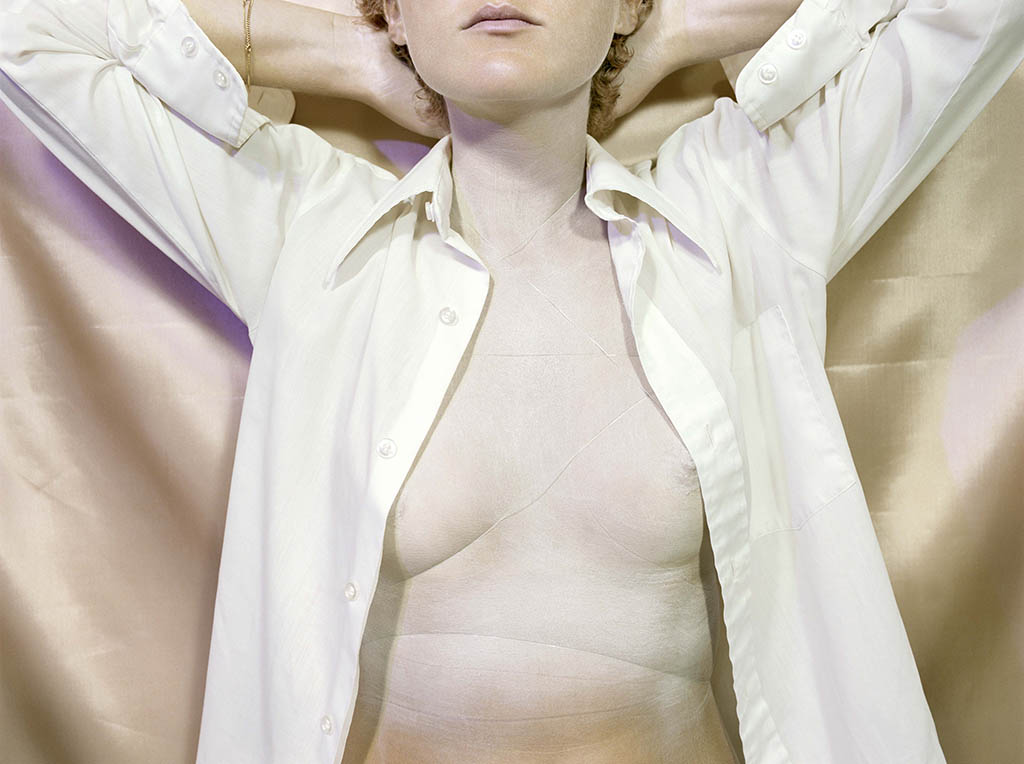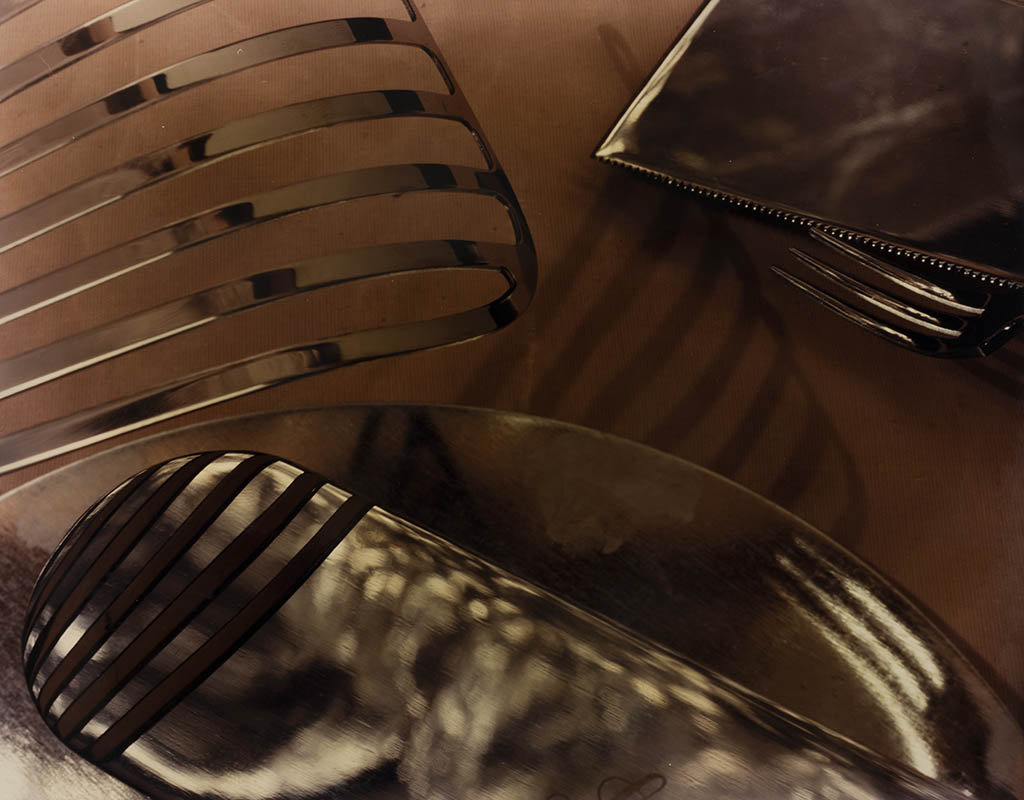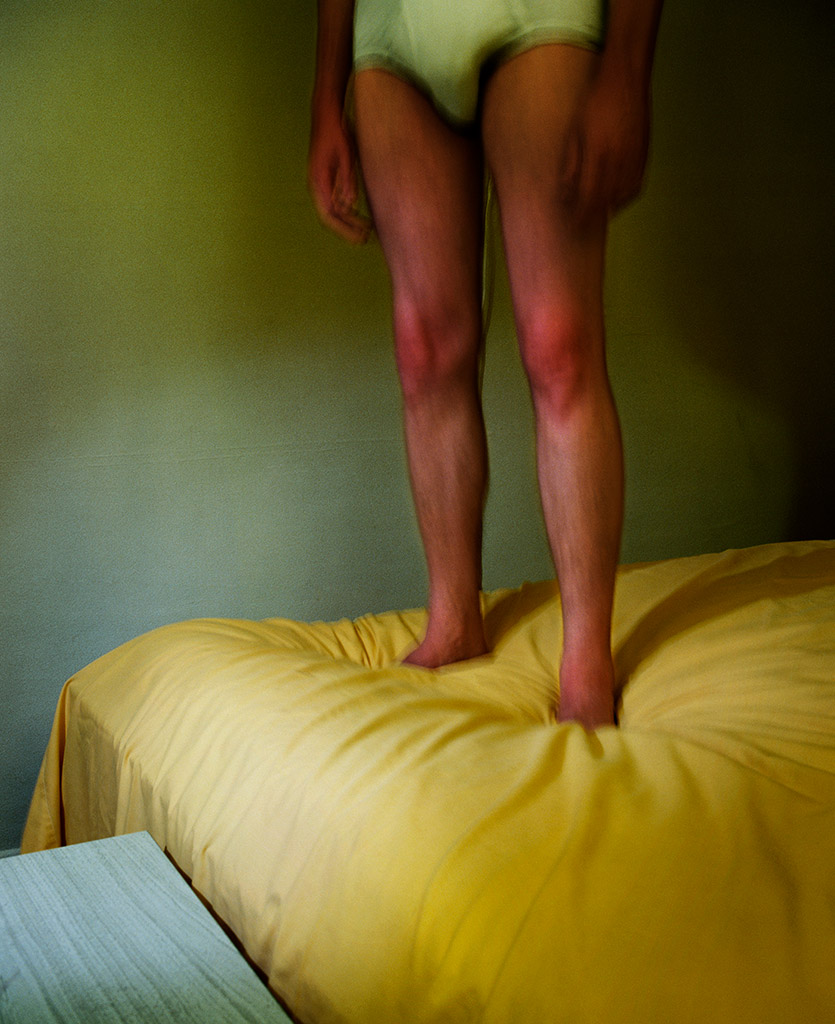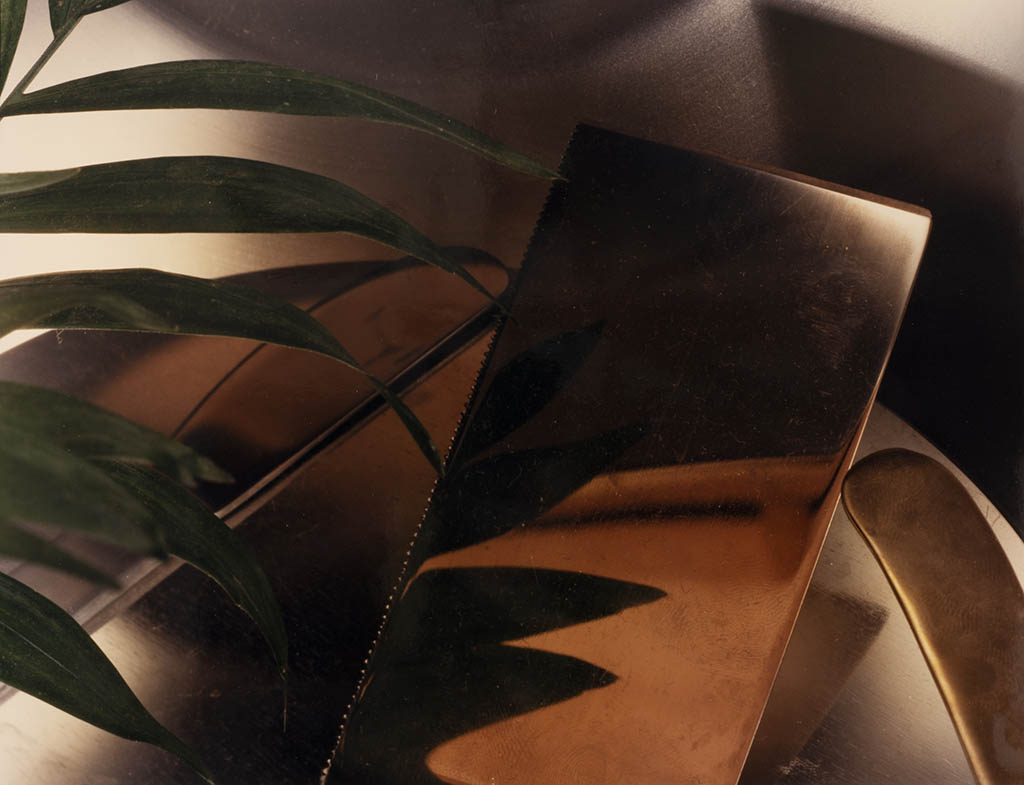On the occasion of the inauguration of its back-to-school exhibition "1970s, chromatic years" around two American photographers Jo Ann Callis and Jan Groover, we met the gallery's director, Miranda Salt, to present the works of these two avant-garde artists. It is also an opportunity to look back on the long period of health crisis which has weakened the gallery market and on the necessary awareness in the face of the ecological emergency. Jan Groover will also be honored next November, as part of a retrospective at the Fondation Henri Cartier-Bresson.
Ericka Weidmann: Until November 13, you are presenting “1970s, chromatic years”. You are comparing the work of two women photographers: Jo Ann Callis and Jan Groover, can you explain your choice?
Miranda Salt: There are several reasons for this. Let's start with the simplest and most honest: I love their work. I opened the gallery in 2018, it's a small structure and it's a project from the heart so I choose works that affect me personally. I'm not in a market calculation, I'm in a project of sharing and love for this medium. For me, these are two artists who marked me, their signatures are very original but they still remain somewhat confidential in France, so I am keen to present them to French collectors.


Untitled, 1979. KSL 69.3
Vintage chromogenic print
16×20 inch / 40.6×50.8 cm Ed. 3/3
For Jan Groover, it's a more personal story. When I was 17, I bought his MoMA-edited book. At the time, I wasn't very interested in the visual arts, more in literature, but this work had a particular impact on me. And this work remained for more than 30 years in a cardboard box, from the attic to the basement and I found it by pure chance when the gallery opened four years ago! This book is long out of print and this work is fascinating. And just like Callis, his work is very innovative, it marked a very strong ground very early in the history of color photography and which is not well enough known in France, despite a retrospective at the Musée de l'Elysée in Lausanne in 2019.
EW: The role of color photography as the axis of the exhibition.

Untitled, from Early Color portfolio, c. 1976
Archival Pigment Prints -16×20 inch / 40.6×50.8 cm
© Jo Ann Callis / Galerie Miranda

chromogenic print
16×20 inch / 40.6×50.8 cm. Ed. 3/5
MS: Particularly important was the role of Jo Ann Callis and Jan Groover in the practice of color photography. They were pioneers, even if I don't really like that word. It was the beginnings of color. I also recall how color photography entered museums in the 1930s, but it was above all the evolution of the practice in the 1960s by the industry with firms such as Kodak which enabled its democratization. Callis and Groover used color photography but developed the stagings. There are historical markers that really struck me: it is often said that it is thanks to William Eggleston that color photography entered history. However, they were very active, they have been somewhat forgotten!
The staging is also an important axis of this exhibition, their works have predated many other artists who have had a great reputation thereafter. Cindy Sherman for example, or Gregory Crewdson and many others…
These two women did not have, in my eyes, the recognition they deserved.
EW: Although these are two artists who have never claimed to be feminists, is this a feminist exhibition?

JO ANN CALLIS
Untitled, from Early Color portfolio, c. 1976
Archival pigment print – 16×20 inch / 40.6×50.8 cm
© Jo Ann Callis / Galerie Miranda
MS: For me, it's a feminist exhibition about feminist artists. In my definition of feminism, it is not only to proclaim speeches, it is to do. In my eyes, these two women pushed a lot of doors at a time when it was difficult to push them. They drove off without asking the company's permission. Jo Ann Callis and Jan Groover chose to be artists, they chose photography which was at the time and still remains a very masculine sector.
And then it also goes through the domestic sphere. Both of them did not work only on this theme, in particular Groover who had already made very interesting series outdoors... So she was not always confined to domestic scenes, but it was her series "Kitchen Still Lifes" which is the best known. In the case of Jo Ann Callis, it was different because she was really limited on her practice because she had children, she was divorced with the real constraints of a housewife and mother. Ultimately it is this domestic sphere that inspired her to create.
It is for all these reasons that they are feminists for me, because they acted in a strong and free way and because they created their work in an interior sphere at a time when men could freely roam the American territory.

Untitled, 1979. KSL 073.3 Vintage
chromogenic print
16×20 inch / 40.6×50.8 cm. Ed. 2/3
© Jan Groover / Miranda Gallery
EW: We also notice that women photographers are very present in your programming.
MS: Everyone has their own vision of things, but for me it's very important to give them visibility. I am of Australian nationality and in my career, in France, I always had this role of "passeuse" in the French companies for which I worked, I was the Anglo-Saxon who navigated freely between French culture and Anglo-Saxon culture and that which brought back a little "news from the front". So I like this role, the fact of discovering, of sharing… I opened my gallery four years ago, I was almost 50 years old, so unfortunately I didn't have the “time” to defend young talents. I don't have three decades ahead of me to invest and support them. So it's a very thoughtful bias to defend established artists on whom I could convince on their collectible value.
Combined with this, a personal journey quite clearly marked by feminism, it was obvious to favor female artists. That being said, I am not in a sort of “women's ghetto”. In my vision of feminism, it is important to include male artists as well. Many of them have talent, I don't see the point of depriving themselves of it. I tried to reverse the current balance that we find in the gallery where there are on average 70% men and 30% women, it's a fairly fair path to take.
It's very personal, but it's really my vision of things, I'm not always looking for a feminist discourse in the content, sometimes yes, but not essentially.
EW: So you were talking about it, you opened your gallery in 2018, it's a "young" gallery. Your activity has been strongly impacted by the health crisis. How did you experience this period? And how is the sector today evolving?
MS: Honestly, it was very complicated and it's not over. We spent two particularly difficult years with a very violent drop in turnover. To be transparent, I had, like many others, to take out a state-guaranteed loan. I was forced into this, otherwise I couldn't hold on. I don't have a banker husband or an aristocratic father. Well, I'm a "one woman show", I do everything on my own with my own means. And so the sinews of war is cash, and how to hold on when there are no more sales? There, we are coming out of the crisis, so we have to invest with an even higher level of debt, so it is very difficult. But I am an inveterate optimist and I sincerely believe that in this context, having a small structure is an advantage because my fixed costs are rather drawn down,
Another important thing is that I don't have a gallery economy that depends on fairs, I do them when I have a suitable subject, the means, and if I think it really makes sense. I direct the gallery's investment more towards quality exhibitions, small fairs, boutiques with very strong lines and collaborations… And above all, I focus on Parisian and Franco-European activity. So I think that small structures like mine have every chance of getting by. On the other hand, I think that it is more complicated for the intermediate structures. This crisis has had an effect of accelerating the change of generation of models, which I have seen pass on the American market, that is to say for a certain number of galleries that have been well established for 25/30 years, who were a few years away from retirement, this crisis was an opportunity to make the decision to stop early. Either you had to reinvent yourself, or you had to stop. We therefore notice that there is a kind of accelerated change of guard which has forced the closure of medium-sized galleries, what is in the process of being established is a kind of market polarization which is happening a little everywhere. We will have very small galleries facing very large ones. The latter will continue to be very powerful and to monopolize the market, and I also include the auction houses which hit very hard on the economic system of photography. But the "little ones" have another added value: tailor-made, personalized welcome, advice, passion... Either you had to reinvent yourself, or you had to stop. We therefore notice that there is a kind of accelerated change of guard which has forced the closure of medium-sized galleries, what is in the process of being established is a kind of market polarization which is happening a little everywhere. We will have very small galleries facing very large ones. The latter will continue to be very powerful and to monopolize the market, and I also include the auction houses which hit very hard on the economic system of photography. But the "little ones" have another added value: tailor-made,
personalized welcome, advice, passion... Either you had to reinvent yourself, or you had to stop. We therefore notice that there is a kind of accelerated change of guard which has forced the closure of medium-sized galleries, what is in the process of being established is a kind of market polarization which is happening a little everywhere. We will have very small galleries facing very large ones. The latter will continue to be very powerful and to monopolize the market, and I also include the auction houses which hit very hard on the economic system of photography. But the "little ones" have another added value: tailor-made, personalized welcome, advice, passion... what is in the process of being established is a kind of market polarization which is happening almost everywhere. We will have very small galleries facing very large ones. The latter will continue to be very powerful and to monopolize the market, and I also include the auction houses which hit very hard on the economic system of photography. But the "little ones" have another added value: tailor-made, personalized welcome, advice, passion... what is in the process of being established is a kind of market polarization which is happening almost everywhere. We will have very small galleries facing very large ones. The latter will continue to be very powerful and to monopolize the market, and I also include the auction houses which hit very hard on the economic system of photography. But the "little ones" have another added value: tailor-made, personalized welcome, advice, passion...
EW: How do you envision the future? What lessons should we learn from this crisis?
I think that even if online sales become widespread, we will see what is currently happening in the book sector: a kind of backtracking. We saw it with Amazon, which has irrigated the market for years, for some time there has been a real return to bookstores because they have been able to demonstrate their added value and I think that can do the same thing in the art world.
Afterwards, there is all the same a very big subject which is the problem of the environment. A subject that has not been given much consideration by our sector. It's absolutely absurd that there are 150 art fairs a year! Where everyone carries filled containers for a return five days later with unsold items. It is total madness economically but also for the environment. There is a reflection to be carried out on the whole sector in this regard and it is becoming more than urgent. This will initially lead to increased regionalization of the market, it is also obviously linked to the Covid. That is to say that the Europeans will concentrate on Europe, the Americans, on the United States, and the Asians on Asia…. This seems logical and inevitable given today's stakes.
We can't go on like this, it's not possible, we have to organize ourselves differently. For example, I see great potential for collaboration between galleries. It could be very interesting, for example, for the Americans to participate in exhibitions in Paris, but in collaboration with French galleries so that we avoid all productions crossing the Atlantic. There are avenues to dig for it to be a real click!

